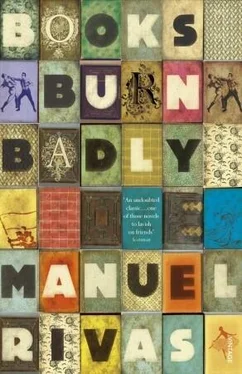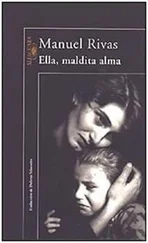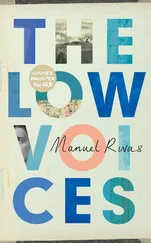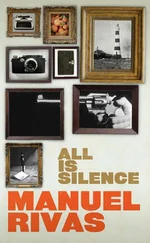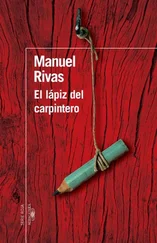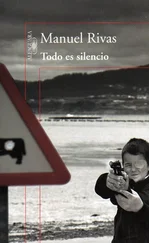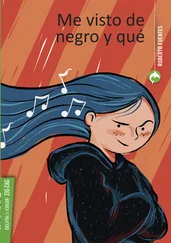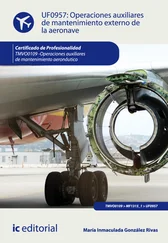‘In my case, the voice will be Hercules Lighthouse,’ said Tito Balboa, Stringer. ‘Who better to entrust a voice to? A novel in which the lighthouse will describe the things it’s seen. Can you imagine everything the lighthouse has seen?’
‘Over two thousand years,’ mused Gabriel.
‘Under this lighthouse, there’ll be another. Or what do you think? That there weren’t lighthouses and lighthouse keepers before the Romans?’
‘You can talk about the first fight between Hercules and the giant Geryon, which gave rise to the city.’
‘No, thanks. No mythology. The lighthouse will describe.’ Balboa grins naughtily, ‘I bet it’s always been a good place for a quickie. Now couples do it in the car. Listening to foreign radio stations. Thing about the light house is you can see without being seen.’
‘How about you?’ asked Gabriel. ‘Have you seen that?’
‘No. But the lighthouse has.’
The green door. Dr Montevideo’s students of advanced stenography entered and left through there. In addition to Tito or Stringer, Gabriel paid particular attention to a man who reminded him of the actor Monty Clift. Because of his sunny and afflicted, scrupulous expression, with a curly fringe, and because of the changes in his appearance. He was almost always well dressed, even elegant. But other times he looked terrible, hadn’t shaved, with creases in his clothes as if he’d slept in them. Dr Montevideo was never among those who came and went. Gabriel had never seen him, but knew he couldn’t be one of them. When Catia agreed, said he could try, give it a go, he almost ran towards the green door.
Gabriel opened the green door, walked along a windowless corridor with the light on, and then climbed a spiral staircase which led to a room in the mezzanine. He knocked at a second green door with a pane of frosted glass. Thought he heard a kind of onomatopoeia, a verbal piece of stenography. Pushed open the door. Found himself immersed in a space that was both tiny and infinite. Whose four walls were covered in murals showing marine life. The style was unmistakably Sada’s, and Gabriel remembered what this painter, his mother’s friend, used to say about the sea’s restless paradise, shoals that were now only to be found deep down. In this illusion of anemones, starfish, polyps, spirographs, sponges, gorgonians, sea-lilies, urchins, jellyfish, the bed where this smoky Poseidon was sitting seemed to be afloat. Gabriel noticed a colony of sea urchins in one corner of the room. They looked like a chromatic wheel containing all the passions. Among the lighter, pink violet urchins, he distinguished a scarlet urchin. The colour of Catia’s nails.
Dr Montevideo was sitting up in bed, against some pillows, writing on sheets supported by a wooden book-rest. He was smoking a large cigar held more by his teeth than by his lips — a yellow, uneven, gap-filled set of teeth. To his right, on a night table, was a bottle of whisky and a glass. The rest of the bed was strewn with papers, most of which had been covered in shorthand, though some had been typed and corrected by hand. To one side of the bed was a cardboard box wrapped in silver foil which served as a wastepaper basket. It was full of scrunched-up pieces of paper. Some had fallen to the floor like decomposed spheres.
His bulging eyes seemed to be held in place by thick-framed glasses. He rested his cigar on a ceramic plate. Still writing, without looking up, he asked, ‘What would you think of someone who recites beautiful poems and sings melancholy songs before committing a crime? Does this affect the poems they recite and the songs they sing?’
‘I don’t see why it should,’ answered Gabriel.
‘You don’t see why it should? Well, think about it. And tomorrow we’ll talk. You know? A friend of mine, the argonautic painter, wants high literature from me. I’m currently tied up with the implications.’ He coughed. ‘Actually I just scrawl, it’s poor Catia who does the writing. One day, there should be a tribute to the heroines of typing. Now help me bring a bit of order to this apocalypse. Put those planets back in the wastepaper basket and then pour me two glass-dilating fingers from the bottle. Make it three.’
Some time later, Gabriel Samos would know that what Dr Montevideo was writing was A Dramatic History of Culture . Being the first to arrive at the academy, he’d often find Catia immersed in the work of typing up the doctor’s notes. He liked to act as Green Door Messenger between the classroom where Catia held sway and the doctor’s sea-bed. He felt comfortable in the mezzanine and, though he abandoned his classes for much of the course, he didn’t stop visiting the Tachygraphic Rose to see Catia, of course, and to climb the stairs to the cabin, to experience this strange ascent to the depths of the sea. He came back the following summer, in the middle of June 1963, with renewed anxiety. The transcription of the doctor’s notes meant Catia was busier than ever and even devoted some class time to her labour. She typed with astonishing speed, without apparent effort. Her hands transformed the heavy Hispano-Olivetti into a fantastic machine. Her face had also changed. She typed the same or more quickly, but with a sense of urgency. Gabriel approached the corner where she worked one day to ask her something. She carried on typing. Said, ‘Just a moment!’ He looked for the sake of looking. Peered over her shoulder. He liked to see how the words appeared. As if they’d been excavated rather than printed. As Catia’s fingers galloped along, possessing the machine, he tapped his fingers against his thighs, keeping time. A reflex action. Except that now his fingers moved nervously like the Stanley compass needle. He read on the excavated page:
Who was this German jurist Spain paid tribute to in 1962? He was something more than a jurist. He was once considered the Kronjurist, the Third Reich’s ‘official jurist’. The architect. .
‘Yes, Gabriel, what is it?’
The lawyer Paúl Santos described Dr Montevideo’s classes of advanced stenography as a chair of humanism. The man who resembled Monty Clift was, needless to say, his most attentive pupil. And more and more openly drawn to Catia. They — Stringer, Gabriel and the other pupils — were also admirers, but it was enough for them if she’d straighten their elbows. Sometimes they’d do it deliberately, get out of shape, so that she’d come and correct their posture.
‘What’s your job?’
‘I’m a lawyer, Mr Montevideo. A lawyer.’
‘A lawyer, eh? A man of law. That’s good. A good lawyer has to be a good writer. Use words with the utmost propriety. Like a doctor. A good doctor is the one who puts together a story that will convince his patient. As for a pathologist, he has to be even more precise, since he has to convince a corpse, not a patient. High praise of a text is that it’s as precise as a forensic report. Some writers aspire to this, to forensic precision. I’ve known pathologists, however, who were very competent in their field, but dissatisfied with their scientific language and envious of the precision of poetry. “Meadows sweet where flames are under.” What do you think? “A Song of Opposites” by Mr Keats. Now isn’t that an example of extraordinary precision concerning human beings? A good prosecutor should also be a good writer. And a judge. A judge has to rearrange all the pieces and construct a credible story for the future as well. Not make a mockery of justice. It sounds as if it’s asking too much. But it isn’t.’
‘You don’t think so?’
‘For justice today, it’s enough not to be unjust. Not as difficult as they make it out to be. You just have to let conscience do its thing. “Conscience is the mental activity of esteeming the good.” Xohán Vicente Viqueira, yes siree! But there’s something else very important. The police report. Which could be described as materia prima . The point of origin. The policeman who produces that report really does have to be a good writer. He’s the one who investigates. The sniffer dog who follows the trail. Selects clues. Everything a policeman writes is politically committed literature. Don’t you think so, Mr Santos?’
Читать дальше
